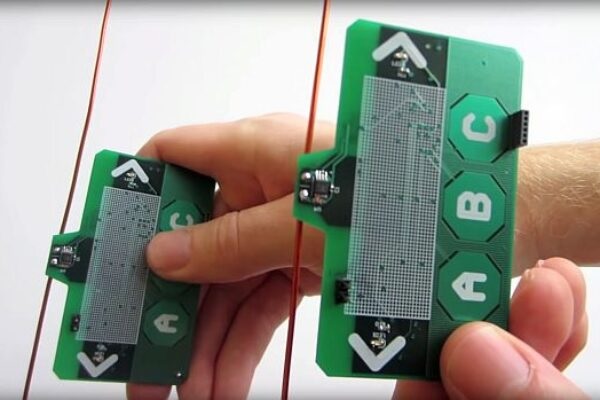Engineers at the University of Washington and Stanford University say they have developed a new ultra-low-power method of communication that can wirelessly transmit information simply by opening and closing a switch that connects a resistor to an antenna. Apart from the energy needed to flip the switch – in this case a transistor that consumes a minuscule amount of power – no other energy is needed to transmit the information.

The system’s data transmission hardware is similar to that of an RFID tag, which communicates by reflecting RF signals, however the new system requires no preexisting RF signal. The system, say the researchers, combined with techniques for harvesting energy from the environment, could lead to all manner of devices that transmit data, including tiny sensors and implanted medical devices, without needing batteries or other power sources.
In the simplest form of ordinary radio, a switch connects and disconnects a strong electrical signal source – perhaps an oscillator that produces a sine wave fluctuating 2 billion times per second – to the transmit antenna. When the signal source is connected, the antenna produces a radio wave, denoting a 1; When the switch is disconnected, there is no radio wave, indicating a 0.
What their research showed, say the researchers, is that a powered signal source is not needed. Instead, random thermal noise, present in all electrically conductive materials because of the heat-driven motion of electrons, can take the place of the signal driving the antenna.
This is possible without violating the second law of thermodynamics, say the researchers, because the receiver in the system is powered and acts like a refrigerator. The signal-carrying electrons on the receive side are effectively kept cold by the powered amplifier, similar to how a refrigerator keeps its interior cold by continuously pumping heat out.
The transmitter consumes almost no power, but the receiver consumes substantial power, up to 2 watts. This is similar to receivers in other ultra-low-power communications systems. Nearly all of the power consumption happens at a base station that does not have constraints on energy use.
The system is similar to a passive communication method such as backscatter. The difference is that in a backscatter communication system, in addition to the data transmitter and the data receiver, there is a third component that generates a radio wave. The switching performed by the data transmitter has the effect of reflecting that radio wave, which is then picked up at the receiver.
A backscatter device has the same energy efficiency as the new system, say the researchers, but the backscatter setup is much more complex, since a signal-generating component is needed. However, the new system has a lower data rate and range than either backscatter radios or conventional radios.
Looking ahead, say the researchers, one area for future work is to improve the system’s data rate and range, and to test it in applications such as implanted devices. For implanted devices, an advantage of the new method is that there is no need to expose the patient to a strong external radio signal, which can cause tissue heating.
Related ideas could enable other new forms of communication in which other natural signal sources, such as thermal noise from biological tissue or other electronic components, can be modulated. Finally, say the researchers, this work may lead to new connections between the study of heat (thermodynamics) and the study of communication (information theory) – fields that are often viewed as analogous, but this work suggests some more literal connections between them.
